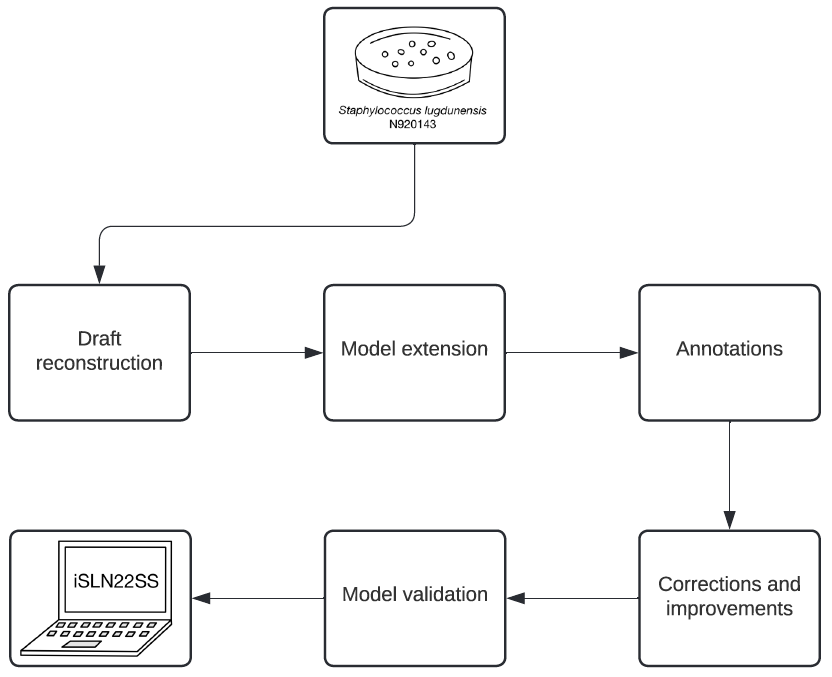News
20.09.2022
Reconstruction of a genome-scale metabolic network of Staphylococcus lugdunensis
Selin Sahin creates the first genome-scale metabolic model for Staphylococcus lugdunensis N920143 as part of her bachelor thesis.
Staphylococcus lugdunensis is a Gram-positive and coagulase-negative human commensal. The bacterium can produce a polypeptide antibiotic called lugdunin. Lugdunin is active against several pathogens, particularly Staphylococcus aureus, known to cause severe human infections. Nasal colonization by S. lugdunensis has significantly reduced S. aureus rates. Therefore, the use of S. lugdunensis as a probiotic to combat S. aureus in affected patients is being investigated. However, this endeavor is complicated because S. lugdunensis is an opportunistic pathogen with high virulence. Although part of the normal skin flora, it has been found to cause infections similar to S. aureus. In her bachelor’s thesis, Ms. Selin Sahin created the genome-scale metabolic model, iSLN22SS, to better understand the metabolism of this unique and diverse bacterium. This model was created using various computer programs and scripts, optimized, and finally validated by experimental data.

